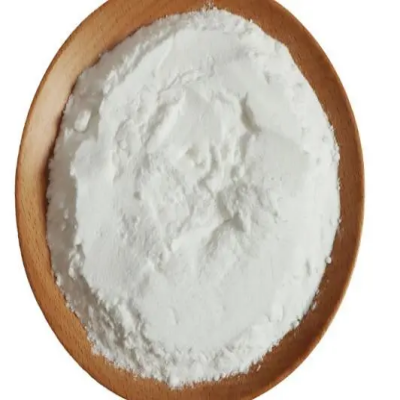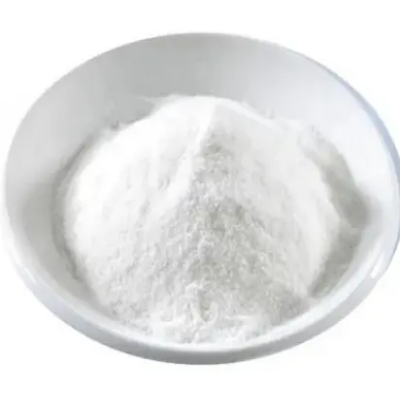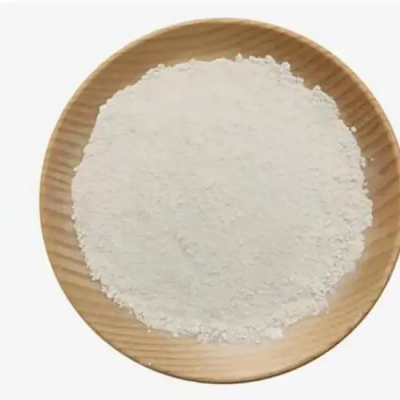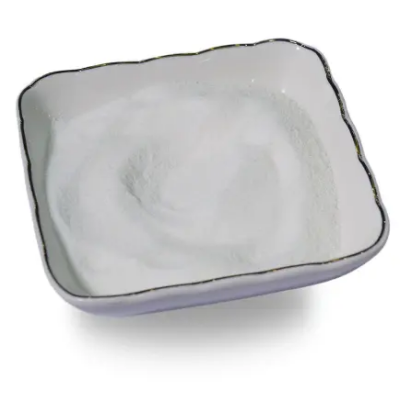-

3,3-Dimethyl-1-Butyne CAS:917-92-0
3,3-Dimethyl-1-butyne is a chemical compound notable for its triple bond structure and two methyl groups attached to the carbon atoms of the triple bond. It is commonly referred to as tetramethylethyne and is used in various chemical synthesis processes.
-

6-Chloro-3-methyluracil CAS:4318-56-3
6-Chloro-3-methyluracil is a derivative of uracil, a pyrimidine base, with chlorine and methyl groups attached to specific positions on the uracil ring. This modification imparts distinct chemical and biological properties to the compound, making it significant in medicinal chemistry and biochemical research. 6-Chloro-3-methyluracil’s structure influences its interactions within biological systems, particularly in nucleic acid synthesis and enzyme inhibition, which are critical aspects in drug design and therapeutic development.
-

4-Isothiocyanato-2-(trifluoromethyl)benzonitrile CAS:143782-23-4
4-Isothiocyanato-2-(trifluoromethyl)benzonitrile is a chemical compound characterized by an isothiocyanate functional group attached to a trifluoromethyl-substituted benzene ring. It is used primarily as a versatile building block in organic synthesis, enabling the creation of complex molecular structures and functional materials.
-
![Exit(1R,3R)-1-(1,3-Benzodioxol-5-yl)-2-(chloroacetyl-2,3,4,9-tetrahydro-1H-pyrido[3,4-b]indole-3-carboxylicacidmethyeste CAS:171489-59-1](https://cdn.globalso.com/xindaobiotech/5EVBWZZXL9LE4FA@55921.png)
Exit(1R,3R)-1-(1,3-Benzodioxol-5-yl)-2-(chloroacetyl-2,3,4,9-tetrahydro-1H-pyrido[3,4-b]indole-3-carboxylicacidmethyeste CAS:171489-59-1
(1R,3R)-1-(1,3-Benzodioxol-5-yl)-2-(chloroacetyl-2,3,4,9-tetrahydro-1H-pyrido[3,4-b]indole-3-carboxylic Acid Methyl Ester, abbreviated for clarity, is a chemical compound renowned for its intricate molecular architecture and potential applications in medicinal chemistry. This compound merges a pyridoindole core with a tetrahydrofuran ring fused to a chloroacetyl group and a 1,3-benzodioxol-5-yl moiety, featuring a methyl ester functionality. These structural elements provide avenues for diverse structural modifications and thorough biological investigations.
-

Candesartan ester intermediate C3 CAS:136285-65-9
Candesartan ester intermediate C3 is a pivotal compound in the synthesis of Candesartan cilexetil, a renowned angiotensin II receptor antagonist used primarily for treating hypertension and congestive heart failure. This intermediate plays a crucial role in the pharmaceutical industry due to its role as a precursor in the efficient synthesis of Candesartan cilexetil.
-

Linagliptin interMediate F CAS:853029-57-9
Linagliptin Intermediate F is a crucial intermediate in the synthesis of linagliptin, a potent dipeptidyl peptidase-4 (DPP-4) inhibitor used in the treatment of type 2 diabetes mellitus. This intermediate plays a pivotal role in the pharmaceutical industry due to its specific chemical structure and functionality. Linagliptin, known chemically as (R)-8-(3-aminopiperidin-1-yl)-7-(but-2-yn-1-yl)-3-methyl-1-(2,4,5-trifluorophenyl)-1,2-dihydroquinazolin-2(3H)-one, exerts its therapeutic effects by inhibiting DPP-4 enzyme activity, thereby enhancing the levels of incretin hormones like GLP-1 (glucagon-like peptide-1). This leads to improved glycemic control in patients with diabetes.
-

Candesartan Cilexetil Impurity 8 CAS:139481-28-0
Candesartan Cilexetil Impurity 8 is a byproduct that arises during the synthesis of Candesartan cilexetil, an angiotensin II receptor antagonist used primarily to manage hypertension and heart failure. Despite being unwanted in the final pharmaceutical formulation, understanding and controlling impurity profiles are crucial for ensuring product safety, efficacy, and regulatory compliance.
-
![BENZOIC ACID, 2-[[(1,1-DIMETHYLETHOXY)CARBONYL]AMINO]-3-NITRO-METHYL ESTER CAS:57113-90-3](https://cdn.globalso.com/xindaobiotech/1ZNB2ZF342ZWRNG299.png)
BENZOIC ACID, 2-[[(1,1-DIMETHYLETHOXY)CARBONYL]AMINO]-3-NITRO-METHYL ESTER CAS:57113-90-3
BENZOIC ACID, 2-[[(1,1-DIMETHYLETHOXY)CARBONYL]AMINO]-3-NITRO-METHYL ESTER is a chemical compound notable for its complex molecular structure and potential pharmacological applications. This compound integrates a benzoic acid core with a carbamate moiety containing a dimethylethoxy group and a nitro-methyl ester functionality, making it significant in medicinal chemistry and biochemical research due to its unique structural attributes and potential biological activities.
-

pyridine-3-sulfonyl chloride CAS:16133-25-8
Pyridine-3-sulfonyl chloride is a chemical compound known for its versatile applications in organic synthesis and pharmaceutical research. This compound, also referred to as picolinoyl chloride, features a pyridine core substituted with a sulfonyl chloride group at the 3-position, making it significant for its unique reactivity and potential utility in various chemical processes.
-

5-(2-fluorophenyl)-1H-pyrrole-3-carbonitrile CAS:1240948-77-9
5-(2-Fluorophenyl)-1H-pyrrole-3-carbonitrile is a chemical compound distinguished by its molecular structure and potential applications in medicinal chemistry and organic synthesis. This compound features a pyrrole core substituted with a fluorophenyl group and a cyano group at specific positions, rendering it significant for its structural uniqueness and potential biological activities.
-

Vonoprazan CAS:881681-00-1
Vonoprazan is a pharmaceutical compound recognized for its potent gastric acid suppression properties, setting it apart from traditional proton pump inhibitors (PPIs) due to its unique mechanism of action. This compound inhibits the H+, K+-ATPase proton pump in the stomach’s parietal cells with high specificity and efficacy, leading to profound and sustained acid suppression.
-

N-(4-CYANO-PHENYL)-GLYCINE CAS:42288-26-6
N-(4-Cyano-phenyl)-glycine is a chemical compound characterized by its molecular structure and potential applications in various fields, particularly in medicinal chemistry and biochemical research. This compound combines a phenyl group with a glycine moiety, making it significant due to its structural uniqueness and potential biological activities.

